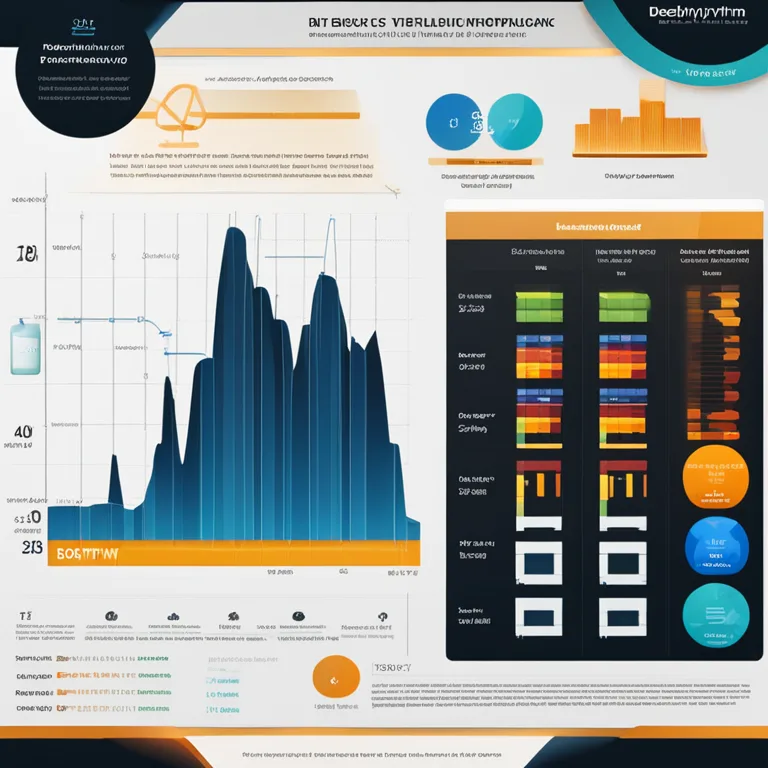
The Rhythms Within: A Deep Dive into Biorhythms Theory
Explore the intricacies of biorhythms theory and discover how it attempts to predict various aspects of human life through innate physiological cycles.
article by Adrian Wallace
Introduction to Biorhythms
The concept of biorhythms is a fascinating intersection of biology and pseudoscience. Originating in the 19th century, it suggests that our daily lives are influenced by natural physiological cycles. These rhythms, often categorized into physical, emotional, and intellectual components, are thought to affect our performance, behavior, and overall well-being. Proponents assert that by understanding and tracking these cycles, individuals can anticipate their peaks and troughs in various faculties, potentially making strategic decisions that align with their personal patterns.

Biorhythms: The Three Primary Cycles
At its core, biorhythms theory describes three primary cycles: the 23-day physical cycle, the 28-day emotional cycle, and the 33-day intellectual cycle. Each cycle has a high phase (positive), low phase (negative), and critical phase (transitional day). The physical cycle influences strength, coordination, and well-being; the emotional cycle sways our moods and feelings; and the intellectual cycle affects cognitive functions and decision-making. Understanding these cycles can, according to the theory, enable people to undertake tasks when they are most likely to be successful.

Calculating Your Biorhythms
Calculating an individual's biorhythms involves using one's birth date as the starting point. In the digital age, numerous online calculators and applications can plot these cycles on a graph. Users are then provided with forecasts that outline their critical, high, and low phases. By the 2024 standards of technology, the precision and personalization of these tools have been enhanced, allowing for more detailed predictions and even the incorporation of additional cycles such as the 38-day intuition cycle among others.

Scientific Skepticism
While many individuals find personal value in biorhythms analysis, the scientific community remains skeptical. Researchers argue that there is a lack of empirical evidence to substantiate the theory's claims. Critics point to the placebo effect and cognitive biases—such as the Barnum effect—as possible explanations for why individuals may believe in their accuracy. Despite this, the interest in biorhythms persists, with proponents advocating their use as a tool for personal insight and optimization.

Application of Biorhythms Theory
Advocates of biorhythms theory argue that it has practical applications in various domains. For instance, in the realm of sports, athletes could time their training and competitions with their physical highs. Similarly, those looking to maximize mental performance might schedule important meetings or work on complicated projects when their intellectual cycle is at a peak. Emotional awareness could be crucial for those aiming to manage relationships and personal interactions effectively. However, evidence of these strategies leading to measurable outcomes remains anecdotal.
Integrating Biorhythms into Daily Life
Despite the controversy, the notion of living in harmony with one's biological rhythms appeals to a significant audience. Some may meticulously align their activities with their biorhythm predictions, while others may use the concept more casually as a guide for self-reflection. Ultimately, integrating biorhythms into one's life is a personal choice, and individuals find varied levels of significance and utility in its practice as they navigate the complexities of existence.
The Future of Biorhythms Theory
Looking ahead, the evolution of biorhythms theory may weave itself more intricately with technological advances, especially with the rise of wearable tech and AI data analytics. If new studies were to provide more concrete evidence, or if innovative applications could demonstrate tangible benefits, the theory might witness a resurgence in popularity, or perhaps even gain some scientific credence. For now, biorhythms remain a topic of curiosity and debate, continuing to entice those searching for patterns in the tapestry of human life.
Published: 12/28/2023
Modified: 12/28/2023
More predictions
Come back here soon to learn more about yourself and your future


The Reality Of Biorhythm Compatibility
Unravel the truth behind biorhythm compatibility and its role in personal relationships and daily life.


Biorhythm Compatibility: Fact Or Myth?
Explore the concept of biorhythm compatibility to discover if there's a real connection between our biocycles and relationship harmony.


Biorhythm Wheel: Unlocking The Secrets
Explore the intriguing world of the biorhythm wheel to understand your physical, emotional, and intellectual cycles for enhanced well-being.